Can a healthy diet change your skin colour? In this week's NewsFlash, we hear how getting your 5 portions of fruit and veg each day can make you noticeably more yellow! Plus, how gut bugs make you grow new blood vessels, analysing antimatter with microwaves and how to type your way to happiness...
In this episode
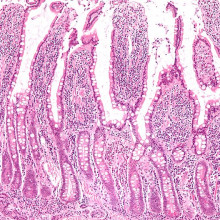
00:17 - Gut Bugs Promote Blood Vessel Growth
Gut Bugs Promote Blood Vessel Growth
The bacteria that live in your intestines change the way that blood vessels form inside your gut. New research, published in the journal Nature, identifies how this happens and offers potential new targets for treating intestinal diseases and obesity.
There are more bacterial cells in your body than human cells, but they are not mere passengers or parasites. Healthy intestinal flora helps to educate the immune system as well as playing an important role in vitamin production and absorption of nutrients. Disturbed or unbalanced gut flora is known to be associated with disease, such as inflammatory intestinal disease, obesity and allergies.
 The inside of the intestine is lined with villi -protrusions that increase the surface area and therefore the amount of nutrients that can be absorbed. When mice are bred in germ free environments, and so have no bacteria in their gut, these are long and narrow, but introducing bacteria causes the villi to become significantly wider and increases the density of blood vessels nearby. This suggests that the presence of bacteria can modify the absorptive capacity of the gut.
The inside of the intestine is lined with villi -protrusions that increase the surface area and therefore the amount of nutrients that can be absorbed. When mice are bred in germ free environments, and so have no bacteria in their gut, these are long and narrow, but introducing bacteria causes the villi to become significantly wider and increases the density of blood vessels nearby. This suggests that the presence of bacteria can modify the absorptive capacity of the gut.
Now, Fredrik Bäckhed at the University of Gothenburg and colleagues in Sweden and Germany have identified three factors responsible for this effect - Tissue Factor (TF), Protease-Activated Receptor 1 (PAR1) and Angiopoietin-1 (Ang-1), all of which are known to be involved in blood vessel creation and proliferation.
The presence of bacteria leads to a sugar molecule being attached to the surface of the Tissue Factor protein, which then causes it to migrate to the surface of the cell, where it signals to other factors to start creating blood vessels. This increases the density of local blood vessels and alters the amount of nutrient that can be absorbed across the intestine wall. Altering these pathways, therefore, could lead to the ability to artificially modulate how the gut absorbs nutrients; a potential treatment for obesity and intestinal disorders.
Professor Bäckhed acknowledged that this is only a first step towards treatment, saying: "It will take time before the results can be applied in a clinical context and converted into new therapies. But our discovery is exciting, and is a result of fundamental basic research which teaches us a great deal about how we live in cooperation with the normal gut microobiota."
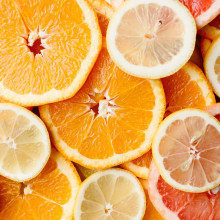
04:08 - You are (the colour of) what you eat
You are (the colour of) what you eat
Your daily fruit and veg intake discernibly dictates the colour of your face, new research has shown...
Scientists at the University of St Andrews in Scotland began by asking 35 students to complete questionnaires logging their average daily intake of fruit and vegetables. These individuals, the data show, consumed a modestly healthy 3.41 fruit and vegetable portions per day.
Next, at three and six week time-points, the students' faces and other skin areas were imaged, the colours analysed and the results compared with the diet records.
Changes in fruit and vegetable intake during the study period, the St Andrews team found, were reflected in skin colour changes in the participants. Specifically, changes were seen in colours corresponding to the carotenoid antioxidants with which vegetables and fruits are richly endowed.
But were these changes perceptible to a person, or merely to a sensitive camera? To find out, Ross Whitehead, the lead author on the study which is published this week in the journal PLoS One, showed a second group of volunteers pairs of images prepared from four faces.
These had been manipulated to add increasing amounts of yellow colouration to the skin over a series of 22 otherwise identical images of the same face. This colour difference would have corresponded to a variation in intake of 5.55 daily portions of fruits and vegetables.
The study participants were asked to rate pairs of images of the same face as more or less healthy. Initially they were shown faces at each end of the 22-face spectrum; if they chose correctly, faces progressively nearer to one another on the colour spectrum were presented.
The subjects could discriminate a colour difference equivalent to consuming 1.89 more, or fewer, portions of fruit and veg per day.
This ties in with what has already been observed in other human studies: people rate yellower faces as more healthy and given free rein to digitally manipulate photos of faces, most people add extra yellow, mimicking the effect of extra betacarotene, the orange chemical in carrots.
The results also resonate with what goes on in the natural world. Dietary antioxidants alter animal colours and this can be used by potential partners as a measure of an individual's health and likely mating prowess. Individuals with a good diet, healthy lifestyle and antioxidants to spare can afford to spend some on making their skins look a nice colour! Humans, it seems, are no different.
So, rather than a fake tan and a nose job, the way to pull, it appears, is instead to reach for your banana and a healthy helping of nuts...
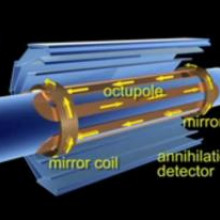
09:30 - Antimatter in the microwave
Antimatter in the microwave
Scientists have taken the first steps towards interrogating  antimatter to find out more about this mysterious material.
antimatter to find out more about this mysterious material.
Antimatter is the stuff that science fiction films are made of. But it's also a reality, can be made in the laboratory and is even used in medical imaging during procedures like PET scanning. It's also an enigma. The rules of physics say that there should be at least as much antimatter in the Universe as there is matter, the material that we are made from. Scientists can't find it though, suggesting either that we've got something wrong, or something else very exciting and important must be happening.
But the problem isn't trivial to study, because when antimatter and "normal" matter meet, they destroy one another. Now scientists have made a big step forward by developing a way to perform the world's first measurements on antimatter, using microwaves.
Writing in Nature and working at CERN in Switzerland, Simon Fraser University scientist Mike Hayden and his colleagues first made a cloud of about 6000 anti-hydrogen atom by mixing positrons (anti-electrons) with anti-protons at a temperature just above absolute zero.
Using a magnetic field they were able to trap the antihydrogen atoms for long enough to then zap them with bursts of microwaves. The microwaves interacted with the anti-atoms, making them leap out of the trap, revealing as they did so information about themselves.
This means that scientists can now begin to apply this technique to probing the behaviour and characteristics of antimatter and, more specifically, find out how to go looking for it elsewhere in the Universe...
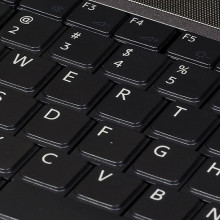
17:35 - Happiness is in your Right Hand
Happiness is in your Right Hand
How you type a word could change the way you emotionally respond to it, and words typed with mainly the right hand seem to make people happier. In fact, the layout of letters on a keyboard may even be shaping the way we use language.
The qwerty keyboard, named after the first 6 letters on the first row, was invented in 1868, and designed to keep commonly used letters apart so as to avoid the clashing and jamming that was possible with mechanical typewriters. Although we no longer rely on the same mechanical processes to type, the keyboard layout has remained the same and is now ubiquitous.
 Writing in the journal Psychonomic Bulletin & Review, Kyle Jasmin & Daniel Casasanto devised a set of experiments to test people's emotional response to certain words. Previous research has shown the performing motor actions, such as typing, in a fluid way leads to positive feelings, so if typing is more fluent with one hand than the other, it could lead to a bias in emotion towards words typed with that hand.
Writing in the journal Psychonomic Bulletin & Review, Kyle Jasmin & Daniel Casasanto devised a set of experiments to test people's emotional response to certain words. Previous research has shown the performing motor actions, such as typing, in a fluid way leads to positive feelings, so if typing is more fluent with one hand than the other, it could lead to a bias in emotion towards words typed with that hand.
To test this, volunteers were asked to rate how positive or negative they feel about a sample of around 150 words. The experiment was done in three languages - English, Spanish and Dutch, with native speakers for each language, and a second test included newer words and internet acronyms such as LOL.
The results showed that words with more letters from the right hand side of a qwerty keyboard produced a significantly more positive emotional response - regardless of language and the volunteer's handedness. Furthermore, the effect was even more pronounced in modern acronyms and words created since the invention of the qwerty keyboard.
To further test this idea, Jasmin and Casasanto wanted to know if keyboard bias would allow them to predict how positive people would find made up words, known as pseudowords, which have no inherent meaning that may alter emotional response. Again, words with a right-hand bias were deemed to be significantly more pleasing.
The authors conclude that there truly is a bias towards feeling good about words typed with the right hand, and argue that this could be because the layout of the qwerty keyboard provides the right hand with an easier job. They also suggest that this could have an impact on marketing, saying:"People responsible for naming new products, brands, and companies might do well to consider the potential advantages of consulting their keyboards and choosing the "right" name."
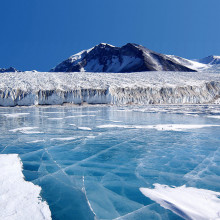
21:37 - Antarctic Invasion and Chimp Cops!
Antarctic Invasion and Chimp Cops!
Steven Chown, Stellenbosch University; Alejandro Frangi, INSIGNIO; Markus Knarden, Max Planck Institute for Chemical Ecology; Carel Van Shaik
Antarctic Invasion
Alien plant species are
invading the fringes of Antarctica through seeds brought in by scientists and tourists visiting the region.
Steven Chown from Stellenbosch University searched for seeds attached to the bags, boots and clothing of Antarctic visitors , calculating that 70,000 seeds in total were brought in over a one year period.
 Invasive species are already established along the western Antarctic peninsula and it's feared that if the climate warms as predicted, these plants as well as new seeds arriving on the scene could flourish.
Invasive species are already established along the western Antarctic peninsula and it's feared that if the climate warms as predicted, these plants as well as new seeds arriving on the scene could flourish.
---
Revealing all at the Hospital
A new virtual human could help personalise medical treatments in the future.
By combining height, weight and medical history data with scans and X-rays, engineers have developed a computer program that can model the cardiovascular system.
Ultimately the aim is to model the entire body, helping clinicians to test and predict, non-invasively, drugs, treatments and medical procedures before using them.
Alejandro Frangi is the director of the UK's INSIGNEO Institute for Biomedical Imaging and Modelling, which opened this week...
---
Homebound Ants sense plumes of CO2
Plumes of carbon dioxide released from ants nests help workers find their way home after they've been out foraging for food.
By recreating these plumes, Max Planck Institute for Chemical Ecology scientist Markus Knaden showed that Tunisian desert ants are up to
75% more successful at locating their nest sites compared with when the plumes weren't present. This suggests that they use this approach to avoid spending too long hunting for home in the oppressive desert heat...
---
 Chimp Cops
Chimp Cops
And finally, chimpanzees have police that step in and break up fights within their social groups.
Monitoring chimp behaviour in a range of groups and locations, Carel Van Shaik (Shike) from Zurich University found that although conflict is rare, when fights do arise within a group, a chimp impartial to the situation will step in to ease the tension. And they do this purely to restore peace and stability within the group rather than for any personal gain.
Crucially, gender and social rank were irrelevant to the policing role and the team think this points to the origin of the human moral code and conscience...
And that work was published this week in the journal
PLoS ONE.










Comments
Add a comment